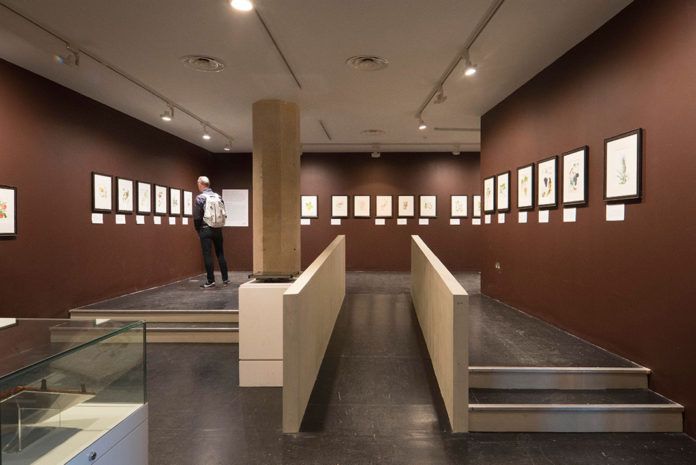
The need for a proven acoustic solution, and a high ambition for the aesthetics, has led to an acoustic system from Sto being specified for a £7.5 million museum redevelopment project in London. The StoSilent Distance system has been installed in the Garden Museum, located at the Church of St Mary-at-Lambeth.
“We specified the StoSilent Distance system for a number of reasons,” explained Alun Jones of Dow Jones Architects. “The building work involved the creation of a cluster of copper-clad pavilions around a cloistered garden area. These house two new educational spaces and a cafeteria, and they are connected by a number of covered walkways. These spaces feature concrete floors and floor-to-ceiling glazing, so in order to achieve an acoustic environment with a reverberation time of less than 0.8 seconds we used a Sto seamless acoustic ceiling. Having used the Sto solution on a previous project we were confident that it would be perfect for the museum, and Sto worked closely with us to create a balanced acoustic system which would satisfy all the different requirements.”
The StoSilent Distance system provides a modern, clean, monolithic alternative to the standard but limited design options associated with exposed grid and tile systems, or boards with multi-facetted holes or slots. It provides positive, balanced acoustics within buildings, helping architects and designers achieve clean and uncluttered lines. It is said to be ideal for situations where, as with the Garden Museum, these surfaces must be suspended to accommodate services, and where the ceilings were being used as negative plenums for air extraction and movement.
The StoSilent Distance system utilises its own Sto SC400 metal framework, and StoSilent Distance 110 boards. The boards are manufactured from 96% recycled glass and can be integrated with lighting, grills and other M&E considerations. StoSilent boards are permeable and have a honeycomb-like structure which is said to allow noise and sound to dissipate through a void space and so balance the acoustic environment.
StoSilent Distance is a lightweight system, and unlike exposed grid and soft tile alternatives, the boards will not sag or delaminate. It can be used to create many different design features, including seamless, inclined planes or curves, or sharp and consistent joints. The benefit to the architects and end user is that the system can also be repaired and re-furbished throughout the lifetime of the building without greatly negating the value of the acoustics, wherever the system has been installed.
For aesthetic reasons, the architects were also keen to use the same monolithic ceiling throughout each of the new areas at the Museum and wanted this to feature a spray-applied finish with a finely-textured surface. “The StoSilent Décor M finish was the perfect solution for this,” added Sto’s technical consultant for acoustics, Mike Wallace. “It creates a sound-permeable decorative coating which can be tinted to match a wide range of shades from the StoColor system, and RAL colours can also be achieved, making it a very versatile solution.”
“As there were a number of varying roof spaces included in the different areas, there was not one standard installation approach that would suit them all,” added Lucien Ionce of Intercoustic, an authorized Sto acoustic installer. “Fortunately, the StoSilent Distance system is extremely flexible in terms of installation, and this gave us plenty of freedom to meet the various day-to-day challenges which arose during the installation process.”
The museum is housed in the Church of St Mary-at-Lambeth, next to the Archbishop of Canterbury’s palace, alongside the River Thames. After being disused for many years, the church was saved from demolition in 1977, after which it was converted into the UK’s first museum dedicated to the history of gardening.



